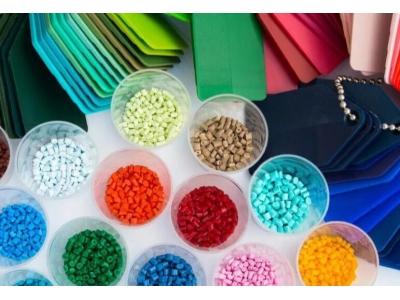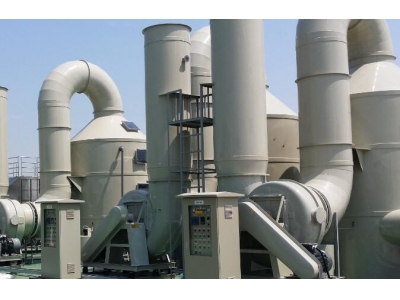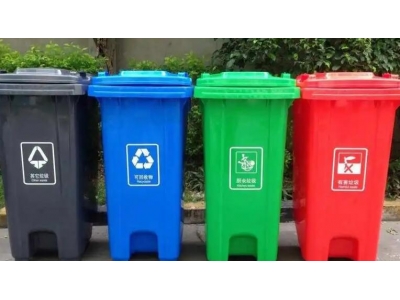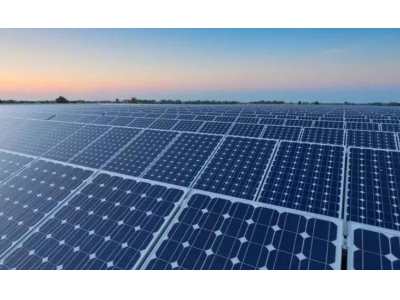一、涤纶.产能分布
近年来,涤纶产业在我国的发展蓬勃,产能规模不断扩大。涤纶是一种合成纤维,具有优异的性能和广泛的应用领域,如纺织、包装、家居用品等。本文将探讨涤纶产业的发展现状和产能分布。
涤纶产业的发展现状
我国涤纶产业经过多年的发展,已经成为世界上最大的涤纶生产和出口国家。在过去的几十年里,我国的涤纶产量呈现出快速增长的态势。如今,在经济快速发展的背景下,中国的涤纶产能不断提高。
涤纶产业链包括涤纶原料、涤纶长丝、涤纶短纤、涤纶纺丝、涤纶面料等多个环节。在上下游各环节中,涤纶长丝的产能最大,占据了整个产业链的核心地位,同时也是中国涤纶产业的竞争优势之一。
我国涤纶产业发展的另一个特点是市场结构不断优化。随着技术的进步和产能的提升,涤纶纤维的种类越来越多,产品质量不断提高。同时,市场对高端和特种涤纶的需求也在不断增加。这对涤纶产业提出了更高的要求,推动着产业结构的升级。
涤纶产能分布
我国涤纶产能分布较为集中,主要集中在东部沿海地区。以江苏、广东、浙江为代表的沿海地区,是我国涤纶产业的集中区域。这些地区具备交通便利、资源丰富、劳动力充裕等优势,形成了完整的涤纶产业链。
其中,江苏省是全国涤纶产能的重要省份之一。江苏的涤纶长丝产能占据全国的比例较大,是我国涤纶产业最为发达的地区之一。江苏盛泽、高邮、邳州等地有众多大型涤纶企业,产能庞大。
广东省作为我国经济最为开放的地区之一,也是涤纶产能比较集中的省份之一。广东的涤纶企业多位于珠三角地区,如佛山、东莞、深圳等地。这些企业在主要市场和港口附近,便于原材料和产品的进出口,形成了较为完善的产业链条。
浙江省是我国纺织产业的重要省份,也是涤纶产能分布最为均衡的地区之一。浙江省涤纶产业发展多年,在技术和产品质量上具备一定优势。温州、绍兴等地有较多规模较大的涤纶企业,形成了较为完善的产业布局。
此外,北方地区的河北、山东等省份也有一定规模的涤纶产能。尽管相对较小,但在满足当地需求和辐射周边地区方面起到了重要作用。
综上所述,我国涤纶产业发展迅猛,产能规模不断扩大。涤纶产能主要分布在东部沿海地区,以江苏、广东、浙江为主要代表。这些地区具备优势的基础设施和完整的产业链,为涤纶产业的快速发展提供了有力支撑。
**Translated English Version:** htmlIn recent years, the polyester industry has been flourishing in China with constantly expanding production capacities. Polyester, as a synthetic fiber, possesses excellent properties and finds extensive applications in textiles, packaging, home furnishings, and more. This article will explore the current development status and distribution of polyester production capacities.
Current Status of the Polyester Industry
China has become the largest producer and exporter of polyester globally after years of development in this industry. Over the past few decades, polyester production in China has witnessed rapid growth. Today, with the backdrop of a rapidly advancing economy, polyester production capacities in China continue to increase.
The polyester industry chain includes various sectors such as polyester raw materials, polyester filament, polyester staple fiber, polyester spinning, polyester fabrics, and more. Among the upstream and downstream sectors, polyester filament holds the largest production capacity, occupying a core position in the entire industry chain and also serving as one of China's competitive advantages in the polyester industry.
Another characteristic of the development of China's polyester industry is the continuous optimization of market structure. With technological advancements and increased production capacities, the variety of polyester fibers has expanded, leading to continuous improvements in product quality. At the same time, the demand for high-end and specialty polyester in the market has been steadily increasing. This places higher requirements on the polyester industry, driving the upgrading of the industry structure.
Distribution of Polyester Production Capacities
Polyester production capacities in China are relatively concentrated, primarily in the eastern coastal regions. Provinces such as Jiangsu, Guangdong, and Zhejiang represent the concentrated areas of the polyester industry in China. These regions possess advantages such as convenient transportation, abundant resources, and a sufficient labor force, which have facilitated the establishment of a complete polyester industry chain.
Among them, Jiangsu Province is one of the significant provinces in terms of polyester production capacities. Jiangsu has a large share of the national polyester filament production capacity and is one of the most developed regions in the polyester industry of China. Locations such as Shengze, Gaoyou, and Pizhou in Jiangsu have numerous large-scale polyester enterprises with substantial production capacities.
As one of the most economically open regions in China, Guangdong Province is also one of the provinces with relatively concentrated polyester production capacities. Polyester enterprises in Guangdong are mainly situated in the Pearl River Delta region, including cities such as Foshan, Dongguan, and Shenzhen. These enterprises are located near major markets and ports, facilitating the import and export of raw materials and products, thereby forming a relatively complete industry chain.
Zhejiang Province is an important province in the textile industry and represents one of the regions with the most balanced distribution of polyester production capacities. With years of polyester industry development, Zhejiang possesses certain advantages in technology and product quality. Wenzhou, Shaoxing, and other locations have a significant number of large-scale polyester enterprises, forming a relatively complete industrial layout.
In addition, northern regions such as Hebei and Shandong also have a certain scale of polyester production capacities. Although relatively smaller, they play an important role in meeting local demand and radiating to surrounding areas.
In summary, China's polyester industry is experiencing rapid development, with continuously expanding production capacities. Polyester production capacities are primarily concentrated in the eastern coastal regions, mainly represented by Jiangsu, Guangdong, and Zhejiang. These regions possess advantageous infrastructure and complete industrial chains, which provide strong support for the rapid development of the polyester industry.
二、世界橡胶产能分布?
世界天然橡胶主要分布在巴西,印尼,印度,菲律宾,越南等国家。
三、可降解塑料概念?
可降解塑料是指一类其制品的各项性能可满足使用要求,在保存期内性能不变,而使用后在自然环境条件下能降解成对环境无害的物质的塑料。因而可生产此类可降解塑料的上市公司就具有可降解塑料概念。
现有多种新型塑料:光降解型塑料、生物降解型塑料、光/氧化/生物全面降解性塑料、二氧化碳基生物降解塑料、热塑性淀粉树脂降解塑料。
四、可降解塑料缺点?
在可降解的条件下容易降解。这决定它的使用范围较一般塑料使用范围小,而且存放条件要求相对于一般塑料要求更苛刻,在技术不成熟时某些可降解塑料的使用寿命低且在使用时间较久时易污染内容物等。
五、可降解塑料用途?
答:可降解塑料的用途主要有两个领域:一是原来使用普通塑料的领域。在这些领域,使用或消费后的塑料制品难于收集会对环境造成危害,如农用地膜和一次性塑料包装,二是以塑料代替其他材料的领域。在这些领域使用降解塑料可带来方便,如高尔夫球场用球钉,热带雨林造林用苗木固定材料。
六、可降解塑料材质?
可降解材料一般可分为光降解塑料、生物降解塑料、光/生物降解塑料和水降解塑料等四大类。
七、可降解塑料代号?
图形标识为带箭头循环圈、双“j”(降解拼音首字母)、材质缩写(如PBAT、PLA、PBS等)、六种降解环境名称(可选)、产品国家标准及产品名称组合而成的绿色笑脸图案,其含义是通过可降解塑料的使用,最终实现相应条件下完全降解而不污染环境的目的。
带箭头循环圈体现了可降解塑料同样可以循环、回收再利用,即使被泄露到环境中可以完全降解而被环境所消纳。
“jj”拟人形,采用左小右大的结构布局,体现了由小及老、人人爱护环境的设计理念。
八、ps塑料可降解吗?
这种不是环保的,普通的要很长时间才能自动降解,因为自然界提供其降解的能量是有限的。目前环保的多数是加淀粉,就是在里面加很多淀粉,这样埋在地下后会很快分解。也有纯降解的高分子,例如聚乳酸,这个自己就会分解。
九、可降解塑料与不可降解塑料有哪些区别?
可降解塑料分两种, • 一种是以聚乙烯塑料为主,掺混淀粉等生物降解剂制成的塑料袋 ,也叫做可生物降解型塑料袋.这种塑料袋主要靠微生物作用而分解. • 另一种是以聚乙烯塑料为主,掺混光降解剂和碳酸钙等矿物粉体制成的塑料袋,也叫做光降 解型塑料袋.这种塑料袋是在太阳光的作用下分解
十、中国甲醇产能分布
中国甲醇产能分布
中国是世界上甲醇生产和消费的主要国家之一。甲醇作为一种重要的能源和化工原料,在国民经济发展中发挥着重要作用。了解中国甲醇产能的分布情况对于研究国内甲醇行业的发展趋势和市场供需关系具有重要意义。
目前,中国甲醇产能主要集中在几个地区。其中,华东地区是中国甲醇产能最为集中的地区之一。上海、江苏、浙江等华东沿海地区的甲醇产能占据了全国的绝大部分份额。这得益于华东地区发达的化工产业和便捷的交通网络,使得该地区成为了甲醇生产的重要基地。
另外,华北地区也是中国甲醇产能的重要分布区域之一。北京、天津、河北等地都拥有相当规模的甲醇生产能力。这与该地区丰富的煤炭资源以及便利的物流条件密切相关。然而,随着环保意识的增强和资源优化配置的要求,华北地区的甲醇产能正在逐渐向东北地区转移。
华南地区也是中国甲醇产能较为集中的地区之一。广东、广西、福建等地的化工产业发达,加之其地理位置优势,使得该地区成为了甲醇生产的重要区域。尤其是广东地区,其相对较大的市场需求推动了甲醇产业的发展。
此外,中国西南地区也具备一定的甲醇产能。四川、重庆等地区的甲醇生产能力逐渐增加,也给当地的经济发展带来了积极的推动作用。这得益于西南地区丰富的天然气资源和良好的交通条件。
综上所述,中国甲醇产能分布广泛,各地区都在不同程度上有产能的积累。尽管华东地区是甲醇产能最为集中的地区,但其他地区的产能也在不断提升,形成了多中心的产能布局。这种多中心的产能格局不仅降低了区域之间的竞争压力,也为中国甲醇行业的发展提供了更广阔的空间。
未来发展趋势
随着中国经济的快速发展和环保意识的提高,中国甲醇产能的发展正面临着一系列新的挑战和机遇。
首先,中国甲醇产能将逐步向环保、高效的方向发展。政府对于环境保护的重视以及对高能耗和高污染行业的限制政策的出台,将推动甲醇产业的结构升级和技术进步。未来,中国甲醇产能将更加注重绿色生产和资源的可持续利用。
其次,中国甲醇产能将进一步向资源丰富的地区转移。尽管现阶段甲醇产能在华东地区最为集中,但资源优化配置的要求将推动产能向资源更丰富的地区转移。特别是西北地区的天然气资源丰富,未来有望成为中国甲醇产能增长的主要区域。
此外,中国甲醇产能将更加注重技术创新和品质提升。随着科技的不断进步和市场需求的变化,甲醇企业将不断提升关键技术和产品质量,以增强市场竞争力。研发新型高效催化剂、改进工艺流程等将成为甲醇产能提升的重要手段。
市场供需形势
中国甲醇市场供需关系的平衡对于行业的可持续发展至关重要。目前,中国甲醇市场需求呈现快速增长的趋势。尤其是在新能源汽车、化纤、涂料等领域的推动下,中国甲醇市场需求持续增加。
然而,中国甲醇市场供应也在增长,产能扩张加速。近年来,甲醇企业纷纷增加生产能力,导致市场供应压力逐渐增大。尤其是一些地方政府为了经济发展利益,盲目扩大产能,加剧了供需矛盾。
因此,在市场供需形势下,中国甲醇企业需要加强内外部市场的调研和分析,把握市场需求的变化趋势,灵活调整产能布局,确保供需平衡。
结论
中国甲醇是世界上重要的能源和化工原料之一,其产能分布对于行业发展和市场供需关系具有重要影响。当前,中国甲醇产能主要集中在华东、华北、华南和西南等地区。
未来,中国甲醇产能将向环保、高效的方向发展,产能布局也将逐步优化。同时,需要关注市场供需形势的变化,灵活调整产能布局,确保供需平衡和产业的可持续发展。





